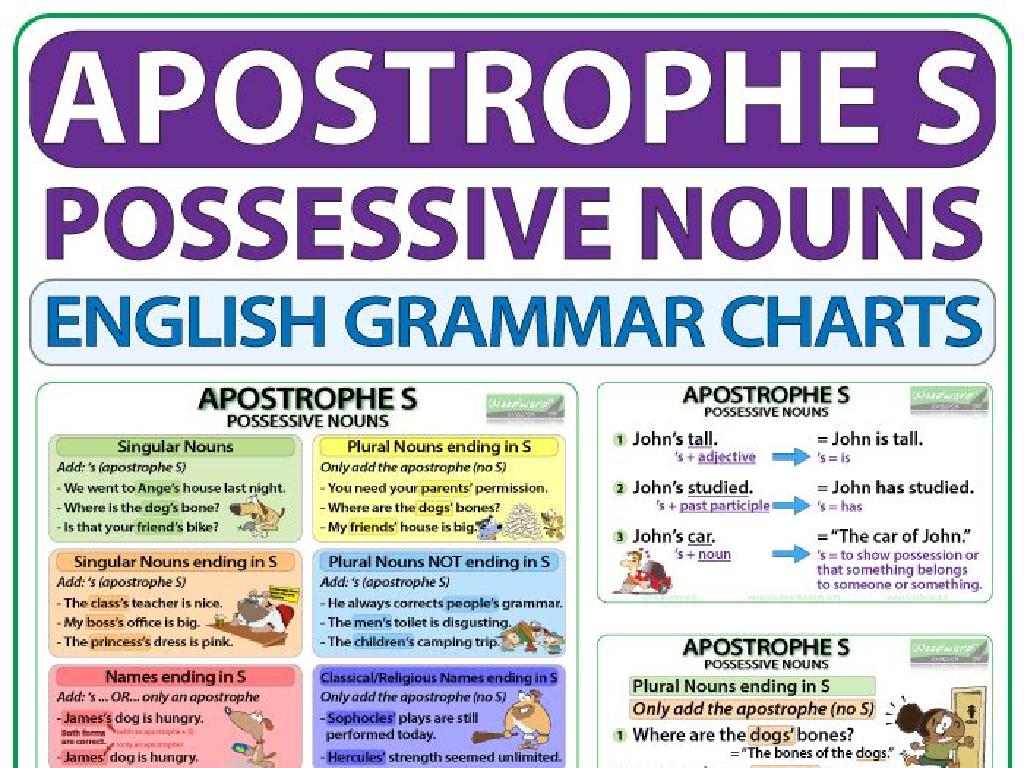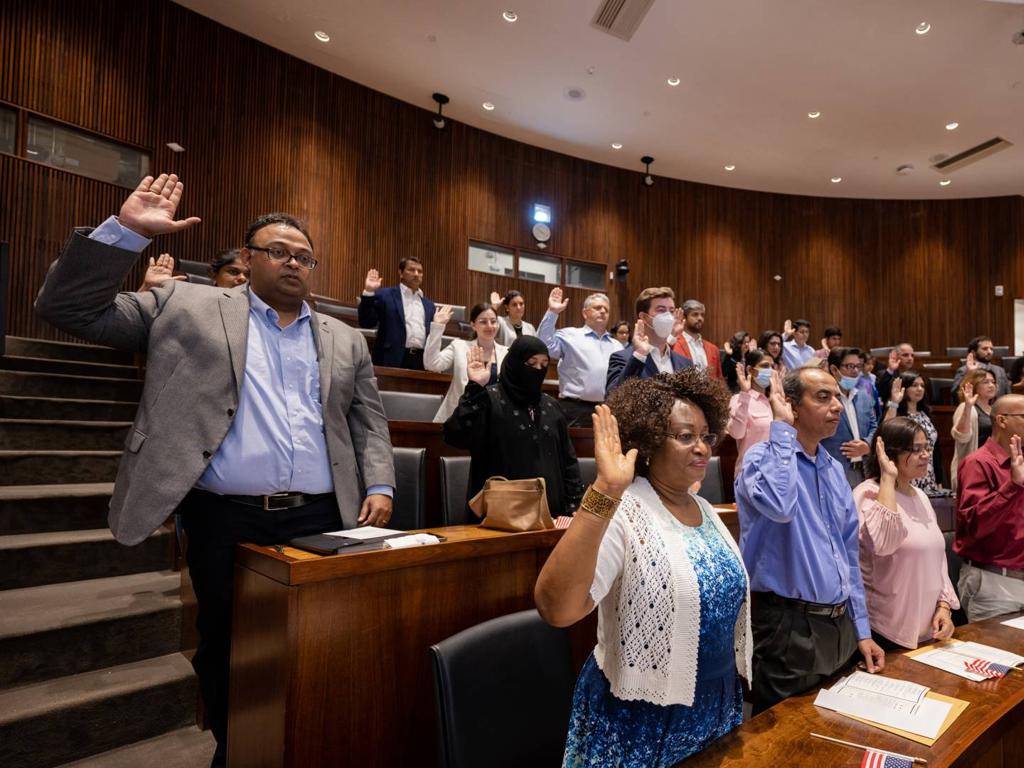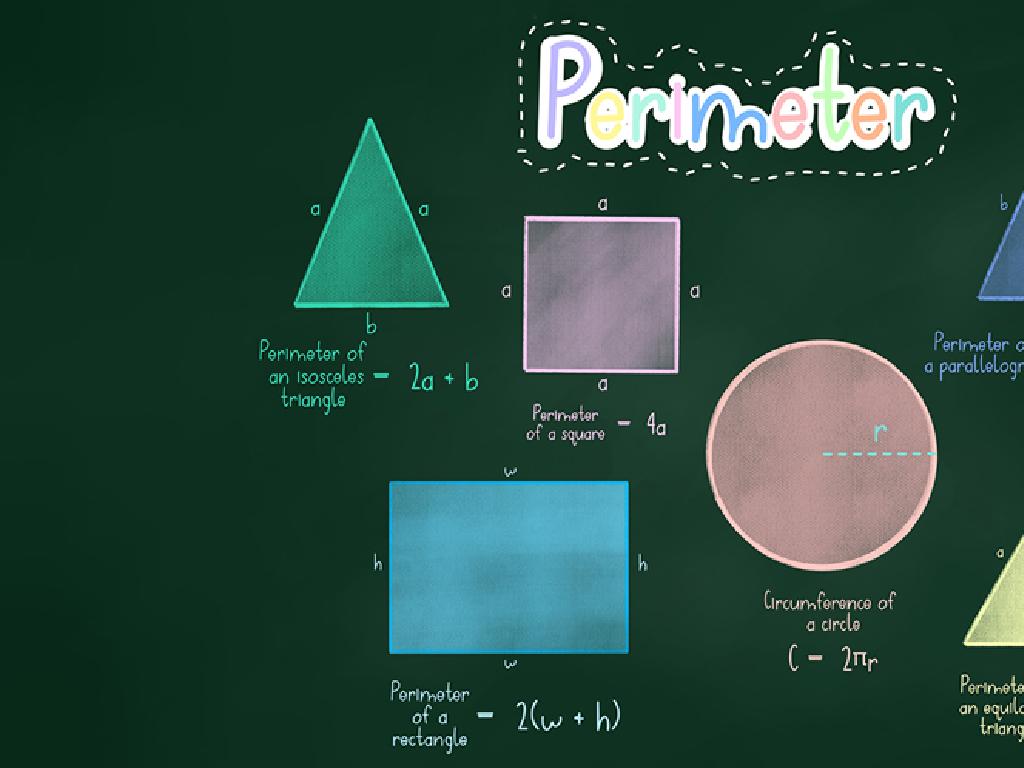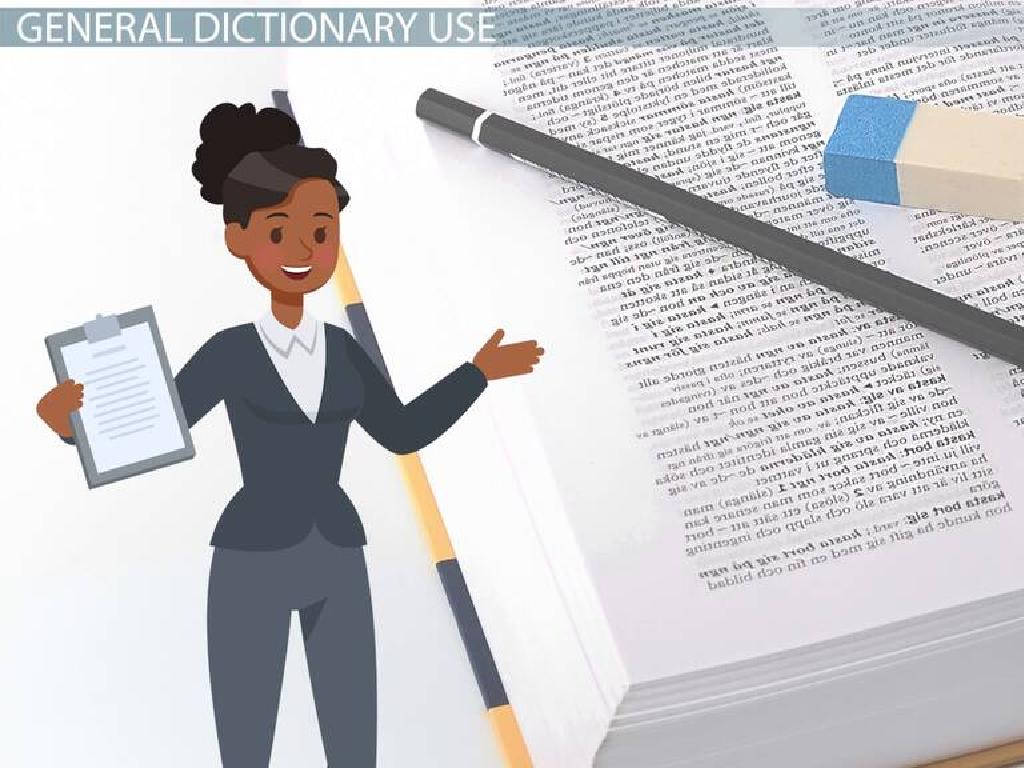Abbreviate Mass And Volume Units
Subject: Science
Grade: Third grade
Topic: Units And Measurement
Please LOG IN to download the presentation. Access is available to registered users only.
View More Content
Understanding Mass and Volume
– Learn about mass and volume
– Mass is how heavy something is, volume is how much space it takes
– Why measuring is key
– Measuring helps us compare, cook, and build
– Units of measurement
– Units are like grams (g) for mass, liters (L) for volume
– Abbreviating units
– Short forms: kilograms (kg), milliliters (mL)
|
This slide introduces the concepts of mass and volume, which are fundamental in science and everyday life. Mass refers to the amount of matter in an object, while volume measures the space it occupies. Emphasize the importance of measuring in various scenarios such as cooking or construction. Explain that units of measurement are standardized quantities used to express the amount of mass and volume. Teach students common abbreviations for these units, such as grams (g), kilograms (kg) for mass, and liters (L), milliliters (mL) for volume. Use examples like comparing the weight of fruits or the amount of water in different containers to illustrate these concepts.
Understanding Mass in Science
– Mass: How much ‘stuff’ in an object
– Measure mass in grams and kilograms
– Smaller objects are measured in grams, while larger ones use kilograms
– Practice saying ‘grams’ and ‘kilograms’
– Repeat after me: ‘grams’ (g), ‘kilograms’ (kg)
– Why mass is important
– Knowing mass helps us compare objects and understand materials
|
This slide introduces the concept of mass to third-grade students, explaining it as the amount of ‘stuff’ in an object. Emphasize that mass is a scientific way to measure how heavy or light an object is without using scales. Introduce grams and kilograms as units of mass, explaining that grams are for lighter objects and kilograms for heavier ones. Engage the class in a fun activity by practicing the pronunciation of ‘grams’ and ‘kilograms’ together. Highlight the importance of understanding mass in everyday life, such as knowing how heavy a backpack is or comparing the weight of two fruits. Encourage students to bring objects from home for a hands-on activity in the next class to measure and compare their masses.
Understanding Volume in Science
– Volume: space an object occupies
– Measure liquids in liters and milliliters
– 1 liter (L) is larger, like a bottle of soda; 1 milliliter (mL) is smaller, like a medicine dropper
– Practice pronouncing ‘liters’ and ‘milliliters’
– Examples of volume in everyday life
– A swimming pool has a large volume; a cup of water has a small volume
|
This slide introduces the concept of volume to third-grade students, explaining that volume measures how much space something takes up. Emphasize that for liquids, we use liters and milliliters as units of measurement. Engage the class by practicing the pronunciation of ‘liters’ and ‘milliliters’ to familiarize them with the terms. Provide relatable examples such as a bottle of soda for liters and a medicine dropper for milliliters to help them visualize the units. Encourage students to think of other examples of large and small volumes they encounter in their daily lives.
Abbreviating Mass Units
– Abbreviate ‘grams’ to ‘g’
– Abbreviate ‘kilograms’ to ‘kg’
– Practice writing abbreviations
– Use ‘g’ for small objects, ‘kg’ for big ones
– Class activity: Board examples
– We’ll write examples as a class on the board
|
This slide introduces the concept of abbreviating mass units to make writing and reading measurements easier. Start by explaining that ‘grams’ can be shortened to ‘g’ and ‘kilograms’ to ‘kg’. Emphasize the importance of using the correct abbreviation for accuracy in science. Engage the class in a collaborative activity where they come up to the board to write examples of items with their mass in grams and kilograms, using the abbreviations. This will help them become familiar with the concept and practice using it in a fun, interactive way. Possible examples for the activity: a paperclip (1g), a textbook (1kg), an apple (100g), a bag of rice (1kg).
Abbreviating Volume Units
– ‘Liters’ becomes ‘L’
– ‘Milliliters’ becomes ‘mL’
– Practice writing abbreviations
– We’ll write some examples as a class activity
– Examples on the board
– Look at the board as we write ‘1 liter (L)’ and ‘250 milliliters (mL)’
|
This slide introduces the concept of abbreviating volume units to make writing and reading measurements easier. Emphasize that ‘liters’ can be shortened to ‘L’ and ‘milliliters’ to ‘mL’. This is a practical skill that will help students in science experiments and understanding measurements in everyday life. During the class activity, guide the students to write these abbreviations themselves and come up with examples to write on the board. For instance, a water bottle might be labeled as 500 mL, and a soda can as 355 mL. This will help them visualize and remember the abbreviations better. Encourage them to ask questions and to use these abbreviations in their homework and classwork.
Why Use Abbreviations?
– Abbreviations save time
– Used by scientists & mathematicians
– Common in daily life
– e.g., ‘Dr.’ for Doctor, ‘Rd.’ for Road
– Activity: Find everyday abbreviations
– Think of abbreviations you see around you
|
This slide introduces the concept of abbreviations, particularly in the context of mass and volume units, to third-grade students. Abbreviations are a shorthand way of writing words or phrases to save time and space, which is especially useful in science and math. Professionals in these fields often use abbreviations to communicate measurements efficiently. Encourage students to think about other abbreviations they encounter in their daily lives, such as ‘Dr.’ for Doctor or ‘Rd.’ for Road, to help them relate to the concept. For the activity, ask students to list abbreviations they see at home or on the way to school and share them in the next class. This will help them understand the prevalence and usefulness of abbreviations in everyday life.
Let’s Practice Measuring!
– Measure object mass with a scale
– Use grams (g) or kilograms (kg)
– Measure water volume in containers
– Use liters (L) or milliliters (mL)
– Use abbreviations for units
– Record your measurements
|
This slide is for a hands-on classroom activity where students will apply their knowledge of measuring mass and volume using scales and measuring containers. They will learn to abbreviate mass in grams (g) and kilograms (kg), and volume in liters (L) and milliliters (mL). Ensure that students understand how to read the scale and measuring containers correctly. Provide a variety of objects for mass measurement and different volumes of water for them to measure. Encourage them to record their findings accurately using the correct abbreviations. This activity will help reinforce their understanding of measurement units and the importance of precision in science.
Measurement Scavenger Hunt Activity
– Find objects to measure mass and volume
– Use ruler, scale, and measuring cups
– Record measurements with abbreviations
– g for grams, mL for milliliters, cm for centimeters
– Share your findings with the class
|
This class activity is designed to help students understand and apply the concepts of measuring mass and volume with appropriate units. Provide students with rulers, balance scales, and measuring cups. Explain that mass is how heavy something is and volume is how much space it takes up. Show them how to abbreviate grams as ‘g’, milliliters as ‘mL’, and centimeters as ‘cm’. Have them find various objects in the classroom, measure their mass and volume, and write down these measurements on their worksheets using the correct abbreviations. After the activity, ask students to share their findings and discuss any interesting observations. Possible objects to measure could include a pencil, a book, a water bottle, etc. This hands-on activity will reinforce their understanding of measurement units and how to record data scientifically.
Review and Share: Units of Mass and Volume
– Abbreviations: g, kg, L, mL
– Share your measurement example
– Did you measure your water bottle? How many mL was it?
– Importance of measuring
– Knowing mass and volume helps in cooking, science experiments, and more.
– How measurements help us
– Measurements let us follow recipes, compare weights, and understand liquids.
|
This slide aims to consolidate the students’ understanding of the abbreviations for mass and volume units. Encourage the students to think about something they measured today, which could be their water bottle, lunch, or any item from a classroom activity, and share its mass or volume using the correct abbreviation. Discuss why it’s important to know how to measure mass and volume, such as for following recipes accurately, comparing the weight of different objects, or understanding how much liquid is in a container. This will help them appreciate the practical applications of what they’ve learned in real-life scenarios.
Mass & Volume Abbreviations: Homework
– Review mass & volume abbreviations
– Measure 5 home items
– Use a scale for mass, a measuring cup for volume
– Record with correct abbreviations
– Example: 500 grams as 500g, 1 liter as 1L
– Share findings in class tomorrow
|
This slide concludes the lesson on mass and volume abbreviations and assigns practical homework to reinforce the day’s learning. Encourage students to find a variety of items to measure, such as a bag of flour (mass) or a bottle of water (volume). Remind them to use the abbreviations for grams (g), kilograms (kg), milliliters (mL), and liters (L) when recording their measurements. This activity will help solidify their understanding of how to apply these units in real-world contexts. Prepare to facilitate a discussion in the next class where students can share their findings and reflect on the process of measuring and recording.






